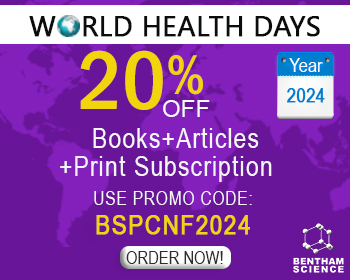[1]
Kim MC, Kim MJ, Kwon YK, et al. Development of duck hepatitis A virus type 3 vaccine and its use to protect ducklings against infections. Vaccine 2009; 27: 6688-94.
[2]
Zhang R, Zhou G, Xin Y, et al. Identification of a conserved neutralizing linear B-cell epitope in the VP1 proteins of duck hepatitis A virus type 1 and 3. Vet Microbiol 2015; 180: 196-204.
[3]
Li J, Bi Y, Chen C, et al. Genetic characterization of duck hepatitis a viruses isolated in china. Virus Res 2013; 178: 211-6.
[4]
Fan Y, Ma X, Zhang J, et al. Ophiopogon polysaccharide liposome can enhance the non-specific and specific immune response in chickens. Carbohydr Polym 2015; 119: 219-27.
[5]
Ren S, Wu M, Guo J, et al. Sterilization of polydimethylsiloxane surface with Chinese herb extract: a new antibiotic mechanism of chlorogenic acid. Sci Rep 2015; 5: 10464.
[6]
Hien TT, White NJ. Qinghaosu. Lancet 1993; 341: 603-8.
[7]
Chen Y, Xiong W, Zeng L, et al. Comparison of Bush Sophora Root polysaccharide and its sulfate’s anti-duck hepatitis A virus activity and mechanism. Carbohydr Polym 2014; 102: 333-40.
[8]
Xiong W, Chen Y, Wang Y, et al. Roles of the antioxidant properties of icariin and its phosphorylated derivative in the protection against duck virus hepatitis. BMC Vet Res 2014; 10: 226.
[9]
Lim H, Park H, Kim HP. Effects of flavonoids on senescence-associated secretory phenotype formation from bleomycin-induced senescence in BJ fibroblasts. Biochem Pharmacol 2015; 96: 337-48.
[10]
Moghaddam E, Teoh BT, Sam SS, et al. Baicalin, a metabolite of baicalein with antiviral activity against dengue virus. Sci Rep 2014; 4: 5452.
[11]
Kang MJ, Ko GS, Oh DG, et al. Role of metabolism by intestinal microbiota in pharmacokinetics of oral baicalin. Arch Pharm Res 2014; 37: 371-8.
[12]
Chen Y, Zeng L, Xiong W, et al. Anti-duck virus hepatitis mechanisms of Bush Sophora Root polysaccharide and its sulfate verified by intervention experiments. Virus Res 2015; 204: 58-67.
[13]
Chen Y, Song M, Wang Y, et al. The anti-DHAV activities of Astragalus polysaccharide and its sulfate compared with those of BSRPS and its sulfate. Carbohydr Polym 2015; 117: 339-45.
[14]
Chen Y, Xiong W, Zeng L, et al. Bush Sophora Root polysaccharide and its sulfate can scavenge free radicals resulted from duck virus hepatitis. Int J Biol Macromol 2014; 66: 186-93.
[15]
Molenaar JJ, Domingo-Fernández R, Ebus ME, et al. LIN28B induces neuroblastoma and enhances MYCN levels via let-7 suppression. Nat Genet 2012; 44: 1199-206.
[16]
Luo YJ, Zhang GH, Xu XQ, et al. Molecular characterization and SYBR Green I-based quantitative PCR for duck hepatitis virus type 1. Agric Sci China 2008; 7: 1140-6.
[17]
Yao F, Chen Y, Shi J, et al. Replication cycle of duck hepatitis A virus type 1 in duck embryonic hepatocytes. Virology 2016; 491: 73-8.
[18]
Ming K, Yuan W, Chen Y, et al. PI3KC3-dependent autophagosomes formation pathway is of crucial importance to anti-DHAV activity of Chrysanthemum indicum polysaccharide. Carbohydr Polym 2019; 208: 22-31.
[19]
Xu G, Dou J, Zhang L, et al. Inhibitory effects of baicalein on the influenza virus in vivo is determined by baicalin in the serum. Biol Pharm Bull 2010; 33: 238-43.
[20]
Ahlquist P, Noueiry AO, Lee WM, et al. Host factors in positive-strand RNA virus genome replication. J Virol 2003; 77: 8181-6.
[21]
Song X, Yin Z, Li L, et al. Antiviral activity of sulfated Chuanminshen violaceum polysaccharide against duck enteritis virus in vitro. Antiviral Res 2013; 98: 344-51.
[22]
Latchoumycandane C, Nagy LE, McIntyre TM. Myeloperoxidase formation of PAF receptor ligands induces PAF receptor-dependent kidney injury during ethanol consumption. Free Radic Biol Med 2015; 86: 179-90.
[23]
Yamamoto H, Watanabe T, Mizuno H, et al. In vivo evidence for accelerated generation of hydroxyl radicals in liver of Long-Evans Cinnamon (LEC) rats with acute hepatitis. Free Radic Biol Med 2001; 30: 547-54.
[24]
de Oliveira MR, Nabavi SF, Habtemariam S, et al. The effects of baicalein and baicalin on mitochondrial function and dynamics: A review. Pharmacol Res 2015; 100: 296-308.
[25]
Murakami K, Ohara Y, Haneda M, et al. Prooxidantaction of hinokitiol: hinokitiol-iron dependent generation of reactive oxygenspecies. Basic Clin Pharmacol 2005; 97: 392-4.
[26]
Pettersson L, Thunberg T, Rocklöv J, et al. Viral load and humoral immune response in association with disease severity in Puumala hantavirus-infected patients-implications for treatment. Clin Microbiol Infect 2014; 20: 235-41.
[27]
Millán O, Rafael-Valdivia L, San Segundo D, et al. Should IFN-γ, IL-17 and IL-2 be considered predictive biomarkers of acute rejection in liver and kidney transplant? Results of a multicentric study. Clin Immunol 2014; 154: 141-54.
[28]
Siebelt M, van der Windt AE, Groen HC, et al. FK506 protects against articular cartilage collagenous extra-cellular matrix degradation. Osteoarthritis Cartilage 2014; 22: 591-600.




























